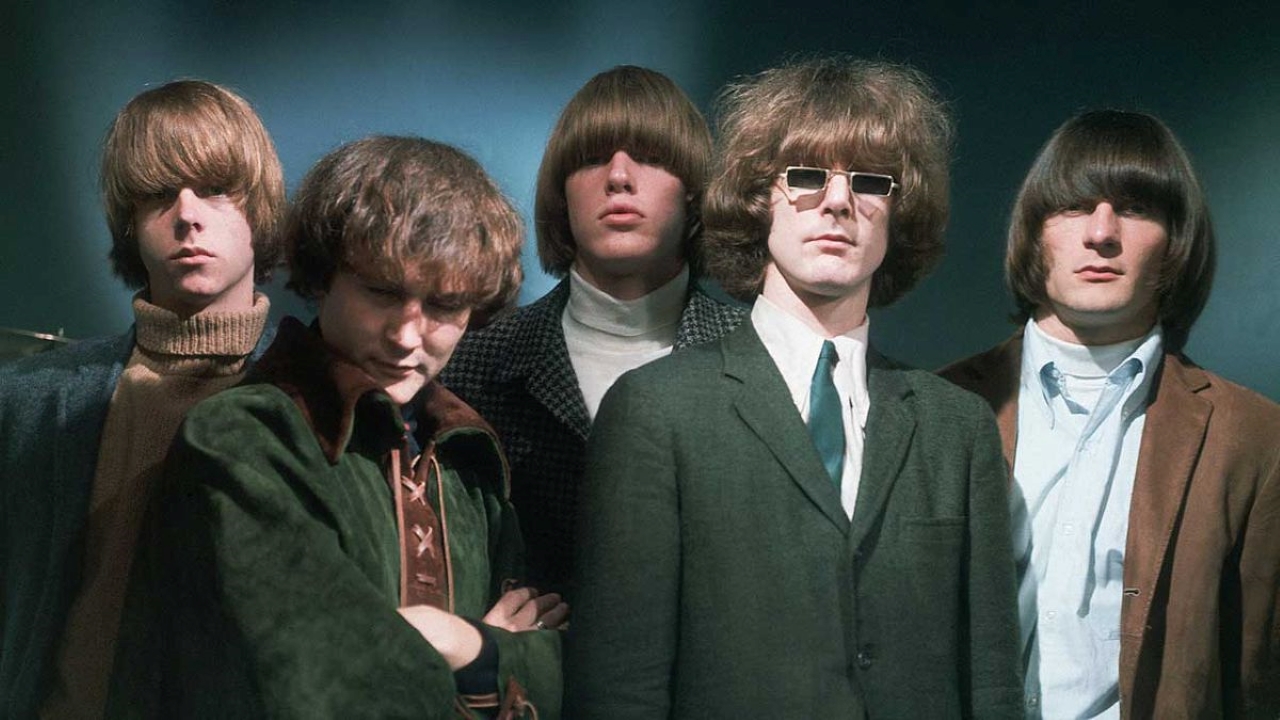
About the song
Released in 1966, “Eight Miles High” marked a bold new direction for The Byrds and for rock music in general. Written by Gene Clark, Jim McGuinn (Roger McGuinn), and David Crosby, the song was unlike anything else on the airwaves at the time — a psychedelic journey that fused rock, jazz, and raga into something daring and new.
Inspired in part by The Byrds’ 1965 tour to England (and their experiences with the rising counterculture), “Eight Miles High” became one of the earliest and most influential psychedelic rock songs. While its lyrics describe the alienation the band felt abroad, many listeners and radio stations interpreted the “high” as a reference to drug use, leading to bans on many major stations and limiting its commercial performance.
Still, the song broke ground and left a lasting legacy.
The sound and style:
Musically, “Eight Miles High” is hypnotic, disorienting, and mesmerizing, channeling free-form jazz and Indian classical music through electric rock instruments.
Key sonic traits:
-
Roger McGuinn’s twelve-string Rickenbacker guitar, played with a Coltrane-inspired sense of modal improvisation
-
A droning, swirling guitar tone that mimics the sound of a sitar
-
A floating vocal harmony, typical of The Byrds, contrasted with the more experimental music beneath it
-
Chris Hillman’s bass and Michael Clarke’s drumming, adding propulsion while staying loose and fluid
It’s a departure from the band’s earlier folk-rock hits, reflecting a new focus on sonic exploration and altered states of consciousness.
Lyrical themes and atmosphere:
“Eight miles high, and when you touch down / You’ll find that it’s stranger than known…”
Though many believed the song was about LSD or drug experiences, the band maintained it was more about isolation, perception, and dislocation, especially during their U.K. tour where they felt out of place in the British music scene and were criticized in the press.
Themes explored:
-
Alienation and cultural shock
-
Exploration of inner and outer worlds
-
A desire to transcend the mundane
-
The clash between consciousness expansion and a judgmental society
The imagery is poetic, abstract, and open to interpretation — which only fueled its mythos and controversy.
Legacy and impact:
Although “Eight Miles High” peaked at No. 14 on the U.S. Billboard Hot 100 due in part to the bans, its cultural and artistic impact was massive:
-
Widely regarded as one of the first true psychedelic rock songs
-
Cited as a major influence by psychedelic, progressive, and alternative artists
-
Inducted into the Grammy Hall of Fame
-
Inspired bands like Pink Floyd, Jefferson Airplane, and later, R.E.M. and Sonic Youth
It helped steer the 1960s counterculture sound toward new, trippier territory, making space for experimentation in mainstream music.
Final thoughts:
“Eight Miles High” wasn’t just a song — it was a signal flare from the future of rock music. With its fearless blend of East and West, jazz and jangle, and mind and sound, The Byrds helped crack open the doors of perception for the rock world.
Half a century later, it still feels mysterious, challenging, and ahead of its time — a swirling, skybound anthem for anyone who’s ever felt like they were seeing the world from a different altitude.
Video
Lyrics
Eight miles high, and when you touch downYou’ll find that it’s stranger than knownSigns in the street, that say where you’re goingAre somewhere just being their ownNowhere is there warmth to be foundAmong those afraid of losing their groundRain gray town, known for its soundIn places, small faces unboundRound the squares, huddled in stormsSome laughing, some just shapeless formsSidewalk scenes, and black limousinesSome living, some standing alone